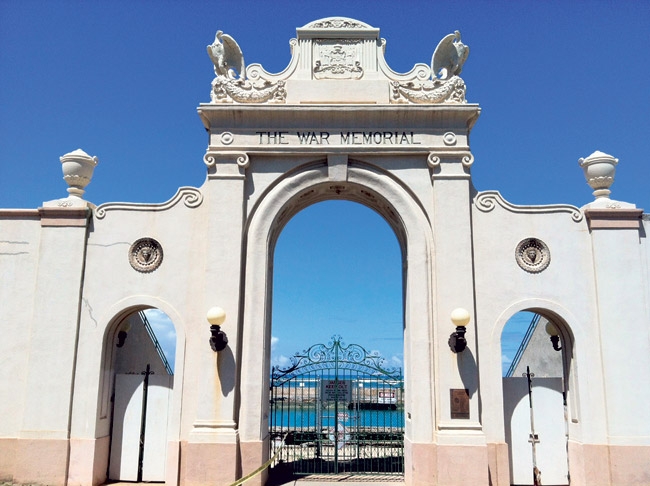Natatorium: Is The Fight Over?
The locked wooden doors slowly opened and my heart began to race. We were stepping back in time, but instead of feeling excitement, I found myself overwhelmed with sadness.
A gaping hole greeted all of us. A huge chunk of the aged walkway had collapsed into the saltwater pool. Rusted rebar now laced the crumbling cement walls that once stood proud.
The Waikiki Natatorium War Memorial was showing all of its 86 years.
It’s hard to believe that this once beautiful memorial, which was built in 1927 in honor of the thousands of Hawaii soldiers who served in World War I, was a symbol of strength and freedom. But after years of neglect, it was falling apart with little dignity.
As I carefully walked along the fragile grounds, my mind raced back to a sunny summer day in 1973. The natatorium was packed with visitors and local residents. My father, a veteran of the U.S. Army, shared the history of the natatorium and what it meant to veterans and the military. He also told my sister and me about the great swimmers who had trained there, including Buster Crabbe, Bill Smith, the Kahanamoku brothers and many more.
His story struck a nerve. You see, my grandmother nicknamed me Duke as an infant, and growing up I would often pretend to be the great Duke Kahanamoku. Never did I imagine that I would get the chance to swim in the same pool that he did – it’s a day I will never forget.
So when Mayor Kirk Caldwell and Gov. Neil Abercrombie announced plans for the future of the natatorium, I found myself feeling mixed emotions.
“The pool will be demolished and a beach will be built that will match up with the Kaimana Beach,” says Caldwell. “The memorial arches are going to be moved more mauka.”
Caldwell says the public beach also would feature two groins to control erosion, a bathhouse, outdoor showers and a new parking lot.
He adds that the cost of the project would be $18.4 million, much lower than the $69.4 million it would take to fully restore the memorial.
“The plan that is before us right now is the only practical way that we can honor the memorial’s purpose and provide the celebration of joy and life that the memorial was originally intended to provide for all of the people of Hawaii,” says Abercrombie.
An environmental impact statement (EIS) could be completed in six months, with construction starting in two years. Funding would come from the state Legislature and City Council. Many who have fought for this site are satisfied, including 98-year-old Cecilia Blackfield.
“I called everyone on that stone whose families are still alive, and they said return it to the beach,” Blackfield says.
But The Friends of the Natatorium, an advocate for restoration of the memorial, is disappointed. Members say multiple studies already have been conducted, and demolishing the pool and building a new beach would break state and federal laws. A message on its website is a clear indication that the fight is far from over: “The Natatorium represents our debt to our veterans. It represents our history. It represents our culture. It must be renewed and reopened.”
“This is about honoring them and not dishonoring them with a crumbling facility that no one can use, and is really is an eyesore for anyone who stands anywhere in Waikiki and looks Diamond Head,” says Caldwell. He understands the city cannot prevent further legal challenges and he hopes community concerns can be addressed during the EIS.
The governor went a step further.
“The ultimate disrespect is to continue this argument,” he says. “I hope everybody agrees that now is the time on behalf of what the memorial was about in the first place to say pau.”
Or is it?






